Body spray paint

Body spray paint
-
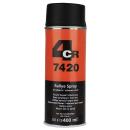 7420.0401Acrylic base SprayMatt black - 400ml
7420.0401Acrylic base SprayMatt black - 400ml -
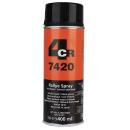 7420.0402Acrylic base SprayBlack gloss - 400ml
7420.0402Acrylic base SprayBlack gloss - 400ml -
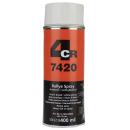 7420.0403Acrylic base SprayWhite gloss - 400ml
7420.0403Acrylic base SprayWhite gloss - 400ml -
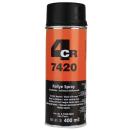 7420.0404Acrylic base SpraySatin black - 400ml
7420.0404Acrylic base SpraySatin black - 400ml -
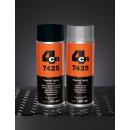 7425.0401High temperature SprayBlack - 400ml
7425.0401High temperature SprayBlack - 400ml -
 7425.0402High temperature SpraySilver - 400ml
7425.0402High temperature SpraySilver - 400ml -
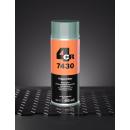 7430.0400Spray paint for wheel rimsSilver aluminium - 400ml
7430.0400Spray paint for wheel rimsSilver aluminium - 400ml
︾
Spray paint for car or motorbike bodywork:
Acrylic-based Spray :
Fast drying : Acrylic-based Spray paints tend to dry quickly, allowing for a shorter processing time compared to other types of paint.
Versatile adhesion: Acrylic base offers excellent adhesion to a variety of surfaces, including metal, wood and some plastics, making it versatile for a variety of projects.
Easy to apply: These sprays are generally easy to apply, with a fine spray that allows the paint to be distributed evenly.
Low odour: Acrylic paints often have a less pronounced odour than some other types of paint, making them more user-friendly for interior use.
High-temperature Spray :
Heat resistant: These sprays are formulated to withstand high temperatures, making them suitable for surfaces exposed to heat, such as car exhausts, barbecues or engines.
Corrosion protection : Some high temperature sprays also offer corrosion protection, which is particularly important for surfaces exposed to extreme conditions.
Colour retention : Most high-temperature paints retain their colour even after prolonged exposure to heat, preventing premature fading.
Rim Paint Spray:
Weather resistance: These paints are generally formulated to be weather resistant, protecting rims from the damaging effects of rain, snow and road salt.
Durability and Scratch Resistance: Rim sprays often offer a durable, scratch-resistant finish, which is essential given the harsh road conditions.
Personalised appearance: Available in a variety of colours and finishes, these sprays allow vehicle owners to personalise the appearance of their wheels, adding an aesthetic touch to their car.
It is important to always follow the manufacturer's instructions for each specific product and to prepare the surface well before application to ensure optimum results.
Spray paint application steps:
Spray paint can application requires thorough preparation and careful execution to achieve optimal results. Here are the general steps to follow:
1. Prepare the surface:
Make sure the surface to be painted is clean, dry and free of any dirt, grease, wax or other contaminants. If necessary, use a suitable cleaner for the surface in question.
2. Protection :
Protect surrounding areas that are not to be painted using Masking tape and newspaper or plastic film.
3. Sanding (if necessary):
If the surface has scratches, imperfections or chipped old paint, consider lightly sanding the area to ensure optimum adhesion of the new paint. Use fine sandpaper.
4. Application of primer (if necessary) :
If using a Spray primer, apply a thin even coat to the surface. Wait for the drying time recommended by the manufacturer.
5. Shaking the can:
Shake the can vigorously for a few minutes to ensure even dispersion of the paint.
6. Spray test:
Carry out a spray test on a test surface or a piece of cardboard to check the consistency of the paint and adjust the spray distance.
7. Applying the paint :
Keep the spray can at a distance of about 20 to 30 centimetres from the surface. Apply the Paint in even, overlapping strokes to avoid drips. Start by spraying off the surface and work across it at a constant speed.
8. Successive coats :
Apply several Thin layers rather than one thick coat to avoid drips and achieve an even finish. Observe the drying time between coats as indicated on the packaging.
9. Finishing and touching up (if necessary):
Once all coats have been applied and the Paint is dry, assess the result. If necessary, make light touch-ups or corrections.
10. Final drying:
Allow the Paint to dry completely in accordance with the manufacturer's instructions before using or handling the painted surface.
It is essential to follow the specific recommendations of the manufacturer of the Spray paint can you are using, as products may vary in terms of drying time, ideal temperature and other parameters.
How to apply spray paint to the bodywork surface:
Applying spray paint often raises a variety of questions among users, whether novices or experienced. Here's a look at some of the most frequently asked questions and some answers that can help to clarify the process:
1. What's the key to a successful application of spray paint?
Successful application depends on meticulous preparation. Make sure the surface is clean, dry and free of contaminants. Follow the manufacturer's instructions and pay attention to temperature and humidity during application.
2. Do I need to use a primer before applying the Spray paint can?
The use of a primer depends on the surface and the type of paint. On bare or metallic surfaces, a primer can improve the paint's adhesion. Consult the manufacturer's recommendations to determine whether a primer is necessary.
3. How can I avoid drips during application?
Maintain a constant distance between the spray can and the surface, and spray evenly in a back-and-forth motion. Apply thin layers to avoid drips. It is also vital to respect the drying times between coats.
4. How do I choose the right Spray paint colour?
Select a colour that meets your aesthetic needs and is compatible with the type of surface to be painted. Some manufacturers offer colour samples or colour charts to make the choice easier.
5. Can I use spray paint indoors?
Indoor application is possible, but make sure you have adequate ventilation to avoid inhaling toxic fumes. It's best to work in a well-ventilated area or outdoors.
6. How do I repair a mistake or drip after application?
If a mistake occurs, wait for the paint to dry completely, then lightly sand the affected area. You can then apply a new coat of Paint to correct the problem.
7. Is spray paint suitable for all types of surface?
Most spray paint cans are versatile and can be used on a variety of surfaces, including metal, wood, plastic and other materials. However, some types of paint may be specific to certain surfaces, so check the compatibility of the product.
In summary, successful Spray Paint application relies on careful preparation, following the manufacturer's instructions and a methodical approach during the application process.